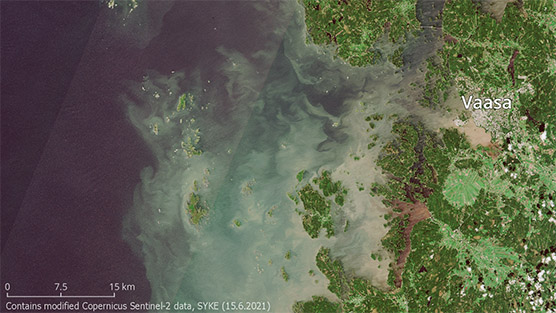Storm curbs growth of cyanobacteria in sea
Published : 20 Jun 2021, 02:34
Updated : 20 Jun 2021, 02:36
Storm Vieno early in the week caused sea surface temperatures to drop considerably from last week, said the Finnish Environment Institute (SYKE) in a press release.
In some places, there may still be yellow pine pollen on coastal waters that looks deceptively like cyanobacterial blooms.
Meanwhile, more cyanobacterial observations have been made than in lakes during the previous week, but the observed amounts of cyanobacteria have been small.
The national cyanobacterial monitoring is based on the monitoring of cyanobacterial deposits in surface water, and the intention is to provide an overview of the cyanobacterial situation in different water bodies.
This summer, cyanobacterial monitoring includes about 400 permanent observation sites across the country on inland and coastal waters and in the archipelago.
Information on the cyanobacterial situation in the open seas is mainly obtained from satellite images, but also from the Finnish Border Guard, the marine research vessel Aranda, the optical device located at the Utö Atmospheric and Marine Research Station as well as cruise and merchant ships (MS Finnmaid and MS Silja Serenade) equipped with Alg@line measuring equipment.
The drift forecasts for cyanobacterial rafts in open sea areas are prepared in cooperation with the Finnish Meteorological Institute's Maritime Services.
The Finnish Environment Institute usually reports on the national cyanobacterial situation on a weekly basis every Thursday from the beginning of June until the end of August.


